A few weeks ago I saw “Coming and Going,” Julian Kreimer’s absorbing exhibition at WEEKNIGHTS, a small gallery Jen Hitchings opened in Bushwick back in August and, according to her website, is soon “transitioning into a slightly newer gallery, with more space and a new staff.”
The following week, while teaching at Purchase College (where Kreimer, an assistant professor of Painting and Drawing/Art Theory and Criticism, is on sabbatic leave) I misplaced the notebook outlining all my upcoming posts. Mentally adrift without my roadmap (if you found it, please return asap), I didn’t get the post up before the show came down, but nonetheless I want to share images of Kreimer’s exhibition, which included both observed imagery and abstraction.
began as an exercise in color, not initially intended to become their own body of work, but as time went on, they started taking on aesthetic and technical qualities that the observational work, made on location, had been built upon. The paintings began informing each other, many times unknowingly at first. The muted color palette and linearity of mushrooms laid out to dry on a table can make their way into works consisting of large seemingly haphazard brushstrokes, layered and scraped away. The accuracy of color placement and representation of light in the observational paintings inform the abstractions, allowing both to exist as windows into environments either recognizable or contemplative.
I wonder, in our age of interdisciplinary practice, why more painters aren’t freely including both mimetic and non-objective paintings in their exhibitions. When so many painters express an interest in the “terrain between abstraction and representation,” why do so few dare to paint in both modes? Does Kreimer’s exhibition signal that the days of rigorous seriality and artist branding are finally over?
“Julian Kreimer: Coming and Going,” WEEKNIGHTS, Bushwick, Brooklyn, NY. February 9 – February 17, 2013. All images courtesy of WEEKNIGHTS.
——-
Subscribe to Two Coats of Paint by email.


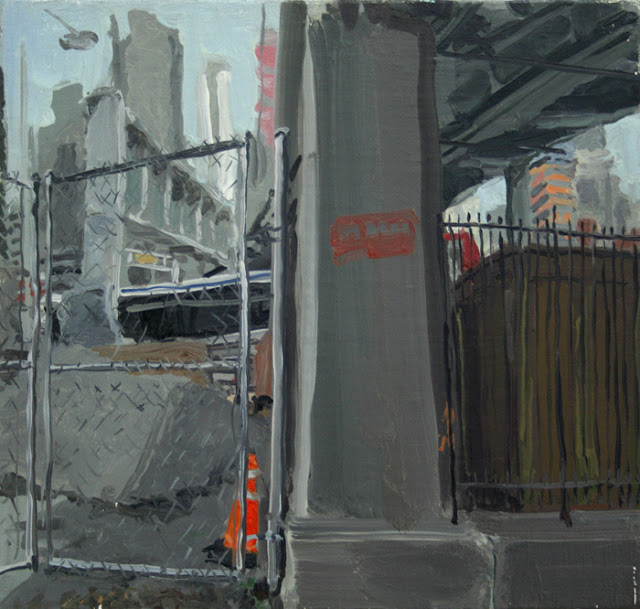

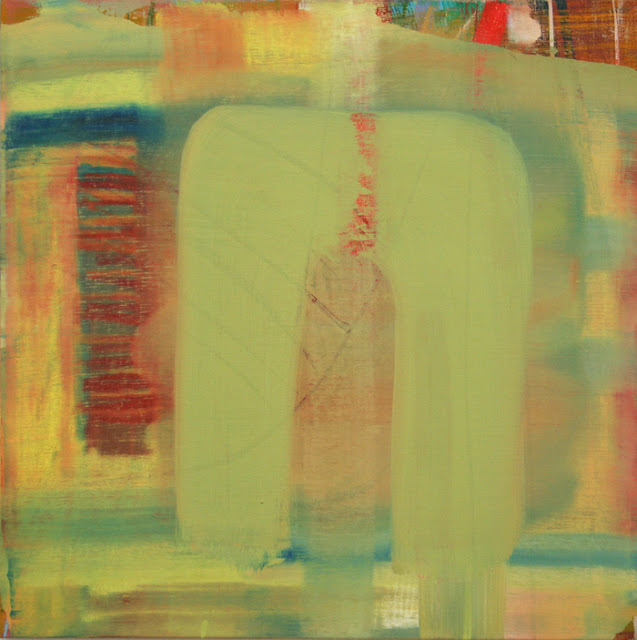

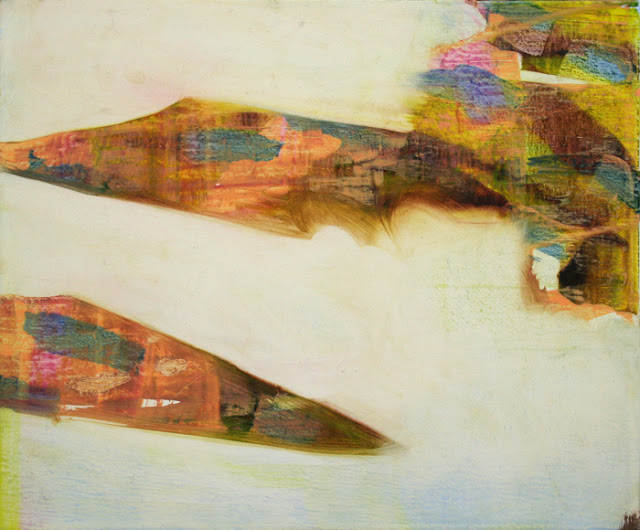
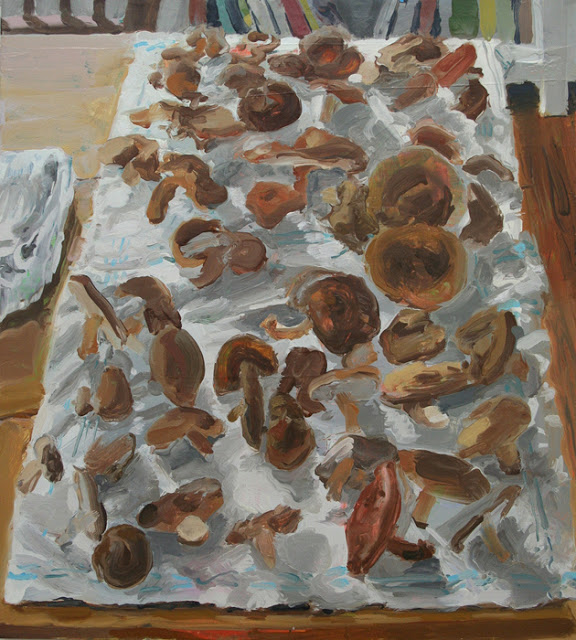
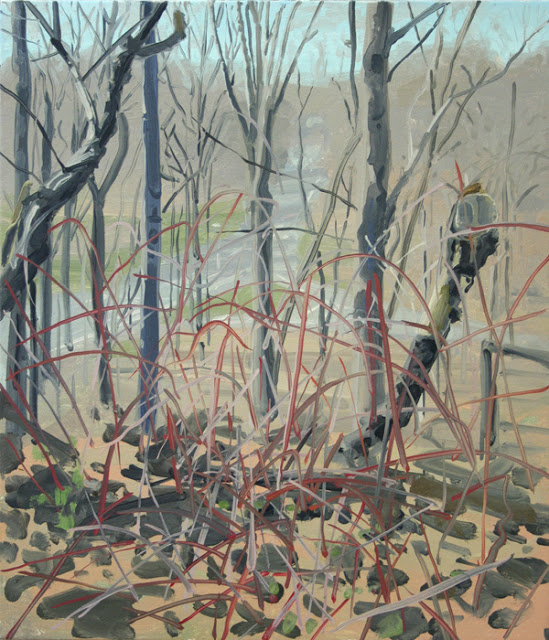
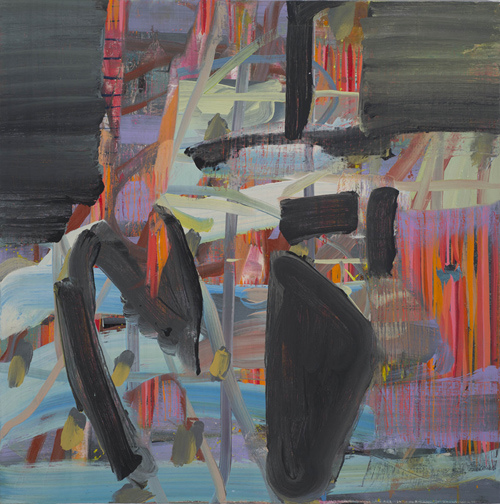
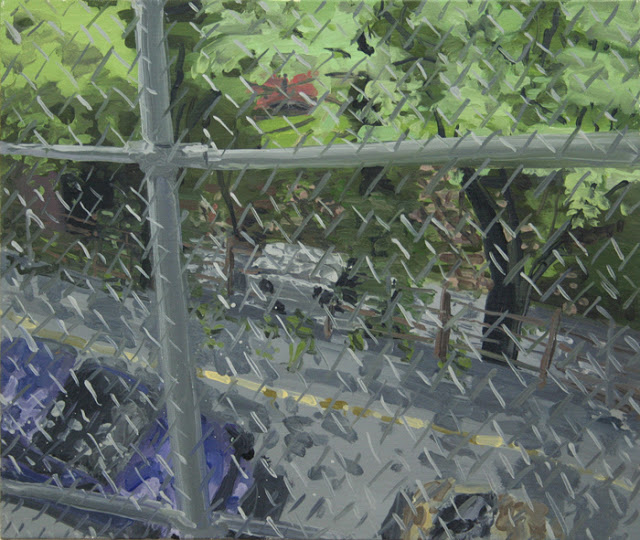





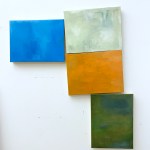

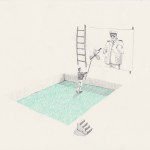
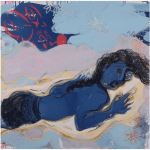





Thank you for raising the question. After a twenty year career as a figurative painter, I began painting abstractly two years ago and have been conflicted about it ever since, thanks in large measure to the state of the art world. While feeling stimulated and completely committed to the goals of non-objective painting, I also remain interested in representational work and continue to make figurative painting. Does one diminish the other or make each somehow less authentic? There seem to be few examples of artists out there doing both that garner much respect. Will Barnett has been one source of inspiration. Are the days of artist branding over? I wonder. Or is it more as Raphael Rubenstein said in his recent AIA article on Neo-Expressionism, an art world of "closed spheres" of "clusters of like minded partisans"?
Link to rubinstein's article: http://www.artinamericamagazine.com/features/neo-expressionism-not-remembered/print/
Maybe its because the forms of the figurative and objective world don't have much meaning for some of us. The meaning, actually a myriad, vague, and ambigious plethora of meanings that are already set in stone before I ever arrived, is what I see in the figurative and objective world. I want forms that have meaning for me. Your question is kind of like asking a composer why they don't limit their work to rewrites of Mozart. Why would they want to search for new compositional forms that have meaning for them?
Interesting post. Not only is Julian's work pleasing to the eye, he has some really great titles.
I find myself in the process of shedding a brand that proved to be too restrictive, limiting. I need the freedom to move between figurative and abstract, black & white and color.
A part of the job of an artist is to explore perception, which is an endlessly interesting activity. More information comes through the eyes, the nose, the ears, the mouth and the skin than can be acknowledged consciously. So, the curious person is left to wonder why he or she becomes aware of some things and not others, and why he or she responds to or ignores these provocations from the outside.
To draw or to paint is to abstract reality. Everyone, who has every picked up a pencil to draw a map or sketch a scene, knows how the brain reduces the visual field by focusing on specifics and limiting detail. Artists, who are trained to manage this reductive impulse, learn to see the geometry underlying complex structures as to render them more clearly and to compose the chaos of the visual field into reassuring repetitions of form organized into pleasing rhythms.
The act of perception always involves abstraction. Perhaps artists, like Mr. Kreimer, by exhibiting both realist and abstract works of art, are moving the subject of painting away from presentation of an image and toward the act of perception. Or to say it differently, perhaps Mr. Kreimer is presenting painting as a performance of perception rather than a product of perception.